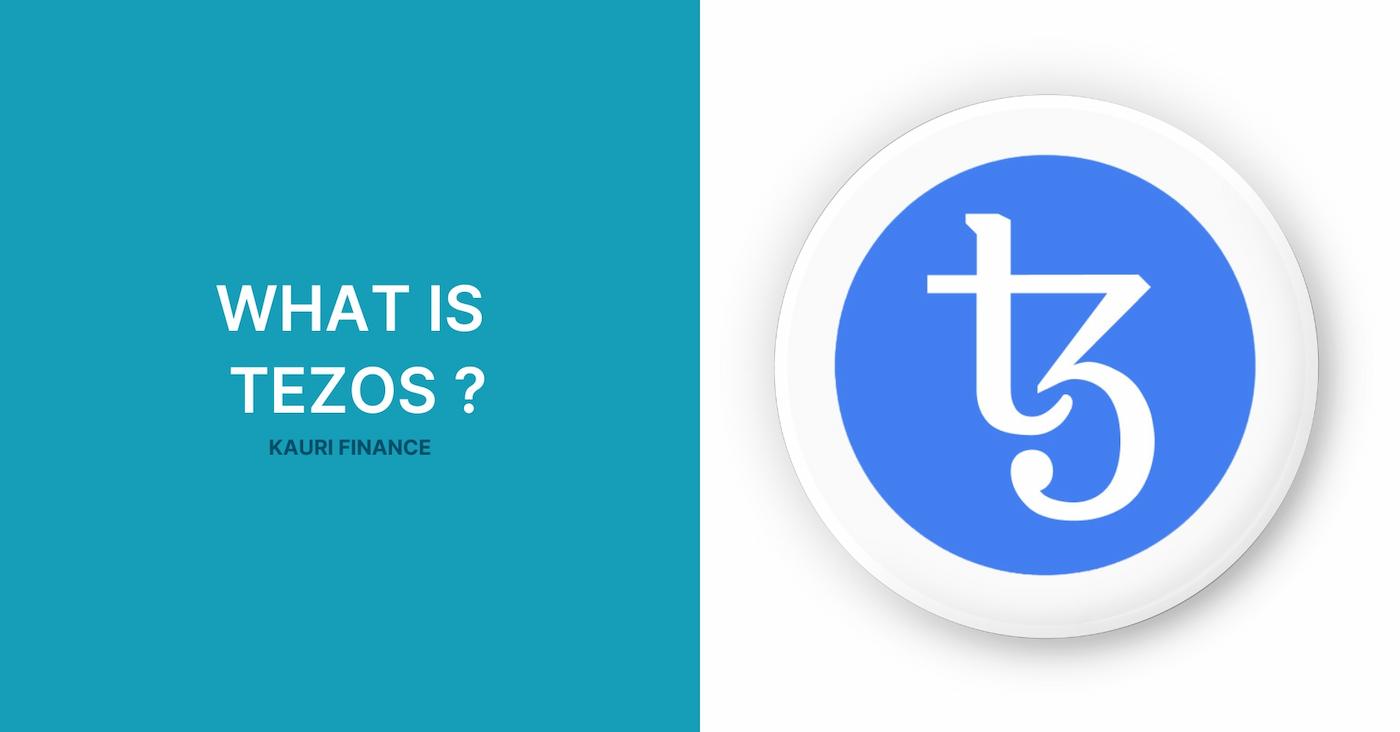
What is Tezos and How Does It Work?

Tezos, established in 2014 by Arthur and Kathleen Breitman, has emerged as a leading blockchain due to its unique self-amending protocol. This protocol is designed to evolve by upgrading itself over time without the need to fork into separate blockchains, a common issue in other blockchain systems. This capability not only preserves network consensus and continuity but also introduces a revolutionary method of on-chain governance. Unlike traditional off-chain governance, where decisions are made outside the blockchain framework, Tezos enables on-chain governance, allowing stakeholders to vote directly on protocol changes from within the system itself.
What is Tezos (XTZ)?
Tezos is a blockchain network that supports smart contracts and decentralized applications (DApps). Its native token, XTZ, commonly referred to as "Tez" or "Tezzie," plays a central role in maintaining and operating the network. The creation of Tezos aimed to incorporate the benefits of blockchain technology while introducing a mechanism to mitigate the disruptive effects of hard forks through its self-amending feature.
In July 2017, Tezos launched one of the most successful Initial Coin Offerings (ICOs) at the time, raising an unprecedented $232 million. This funding helped establish the Tezos Foundation in Switzerland, which now oversees the development and promotion of the Tezos protocol. The foundation acquired Dynamic Ledger Solutions, the company formed by the Breitmans to develop the Tezos technology, securing intellectual property rights and further solidifying the infrastructure supporting Tezos' growth.
These introductory sections establish the foundational concepts and historical context necessary to understand Tezos' significance in the blockchain space. Further details on how Tezos operates, including its governance process and technological specifics, will provide a deeper understanding of its innovative contributions to blockchain technology.
Tezos' Unique Blockchain Mechanism
Tezos stands out in the blockchain world with its self-amending feature, which addresses one of the most significant challenges in blockchain technology—hard forks. These occur when disagreements arise within the community, leading to divergent chains, which can fragment the community and dilute the value of the digital asset. Tezos mitigates this risk by incorporating a mechanism that allows the blockchain to update itself automatically through stakeholder consensus, without necessitating a fork. This ensures a unified progression of the blockchain and maintains network cohesion over time.
The architecture of the Tezos blockchain is divided into two main components: the Shell and the Protocol. The Shell acts as the backbone of the blockchain, responsible for interpreting transactions and administrative operations. It is designed to be adaptable, capable of implementing amendments approved by stakeholders. The Protocol, on the other hand, includes the specific code that governs the operations of the blockchain, such as proposing amendments to the Shell. This structure allows Tezos to modify its rules and logic through community consensus effectively.
Tezos Baking and Governance
"Baking" in Tezos is the process by which stakeholders participate in the governance and operation of the blockchain. Stakeholders, or "bakers," can either actively engage in the creation of new blocks if they hold a minimum of 8,000 XTZ (referred to as a "roll") or delegate their holdings to other bakers. This not only secures the network but also gives bakers the opportunity to vote on proposed upgrades to the blockchain.
The governance process in Tezos involves several stages:
- Proposal Period: Bakers submit upgrade proposals to the blockchain. Each baker can submit or endorse one proposal per period, and the proposal with the most support moves to the next stage.
- Exploration Vote Period: During this phase, bakers vote on whether the leading proposal should advance for further testing. Achieving an 80% supermajority is necessary for the proposal to proceed.
- Testing Period: The approved proposal is implemented on a temporary, forked version of the blockchain called a test chain. This allows bakers to evaluate the changes in a controlled environment without affecting the main network.
- Promotion Vote Period: After testing, bakers vote again on whether to permanently adopt the changes. If a supermajority is reached, the proposal is implemented on the main blockchain.
This governance model emphasizes stakeholder participation and is designed to ensure that any changes to the blockchain reflect the broader community’s consensus, thereby aligning the interests of all parties involved and fostering a stable and predictable development environment.
Liquid Proof-of-Stake (LPoS)
Tezos utilizes a unique consensus mechanism known as Liquid Proof-of-Stake (LPoS), which is an adaptation of the traditional Proof-of-Stake (PoS) system. LPoS facilitates a more democratic form of participation compared to standard PoS mechanisms. In LPoS, token holders can participate in the network's governance directly by staking their tokens to secure the network, known as "baking," or indirectly by delegating their staking power to other bakers without transferring ownership of their tokens. This flexibility allows those with fewer tokens to still participate in the network's security and decision-making processes.
LPoS differs from traditional PoS where the right to validate transactions is entirely based on the amount of cryptocurrency a person holds. In LPoS, the emphasis is on liquidity, allowing participants to remain liquid and earn rewards while contributing to network security. This system reduces the risk of centralization as it encourages a broader base of participants to engage in the staking process.
Practical Applications on Tezos
Tezos is home to a variety of decentralized applications (DApps) that leverage its self-amending blockchain and robust governance model. These applications cover a range of industries, from finance to insurance, demonstrating the flexibility of the Tezos platform:
- tzBTC: This is a decentralized finance (DeFi) application on Tezos that aims to bring Bitcoin to the Tezos blockchain. It enables users to use Bitcoin in various smart contracts and DApps within the Tezos ecosystem, providing greater liquidity and new functionalities to Bitcoin holders.
- Tezsure: This is an insurance platform built on the Tezos blockchain that offers decentralized insurance products. By using the blockchain to manage claims and policies, Tezsure reduces administrative costs and increases transparency, making insurance more accessible and fair.
Value and Utility of XTZ
XTZ, the native token of Tezos, plays a crucial role within its ecosystem. Holding XTZ not only allows stakeholders to participate in the network through baking and voting on upgrades but also provides financial incentives. Bakers earn rewards in XTZ for creating and verifying blocks, which helps secure the network and maintain its operations.
The utility of XTZ extends beyond governance. It can be used for transactions, paying for services within the network, and as a staking asset to earn passive income. The value of XTZ is intrinsically linked to the health and activity of the Tezos network: as more DApps are developed and more users engage with the platform, the demand for XTZ is likely to increase, enhancing its value.
Tezos in the Cryptocurrency Market
Tezos distinguishes itself in the crowded cryptocurrency market with its unique value proposition centered around on-chain governance and protocol adaptability. This differentiator not only addresses the common blockchain issues of forks and upgrades but also offers a sustainable model for continuous improvement without disruption. The flexibility of Tezos' self-amending feature attracts developers looking for a stable and progressive development environment, minimizing the risks associated with platform stagnation or contentious community splits.
Investors and developers are drawn to Tezos for several reasons:
- Governance: The democratic governance model allows for a more inclusive and participatory approach to decision-making, which can lead to more balanced and community-focused developments.
- Innovation: Continuous improvement through protocol upgrades without the need for hard forks encourages innovation and can adapt to new technological advancements or regulatory requirements.
- Security and Efficiency: The Liquid Proof-of-Stake consensus mechanism offers a more energy-efficient alternative to traditional Proof-of-Work systems, while still ensuring robust network security.
- Diverse Ecosystem: Tezos supports a variety of decentralized applications, from financial services to digital art, which provides a broad field for investment and development opportunities.
Conclusion
Tezos represents a significant evolution in blockchain technology, primarily through its pioneering approach to on-chain governance and protocol flexibility. Its ability to self-amend and adapt to community consensus without the need for disruptive forks positions Tezos as a forward-thinking solution in the blockchain space. The robustness of its governance model and the innovative use of its consensus mechanism underscore its potential to influence future blockchain developments profoundly.
For developers, investors, and blockchain enthusiasts looking to engage with a dynamic and evolving platform, Tezos offers a compelling case. Kauri Academy provides a wealth of resources for those interested in deepening their understanding of Tezos, from beginner guides to in-depth analyses. Exploring these resources can provide valuable insights and opportunities for involvement in the Tezos ecosystem, encouraging active participation in its governance and development.
